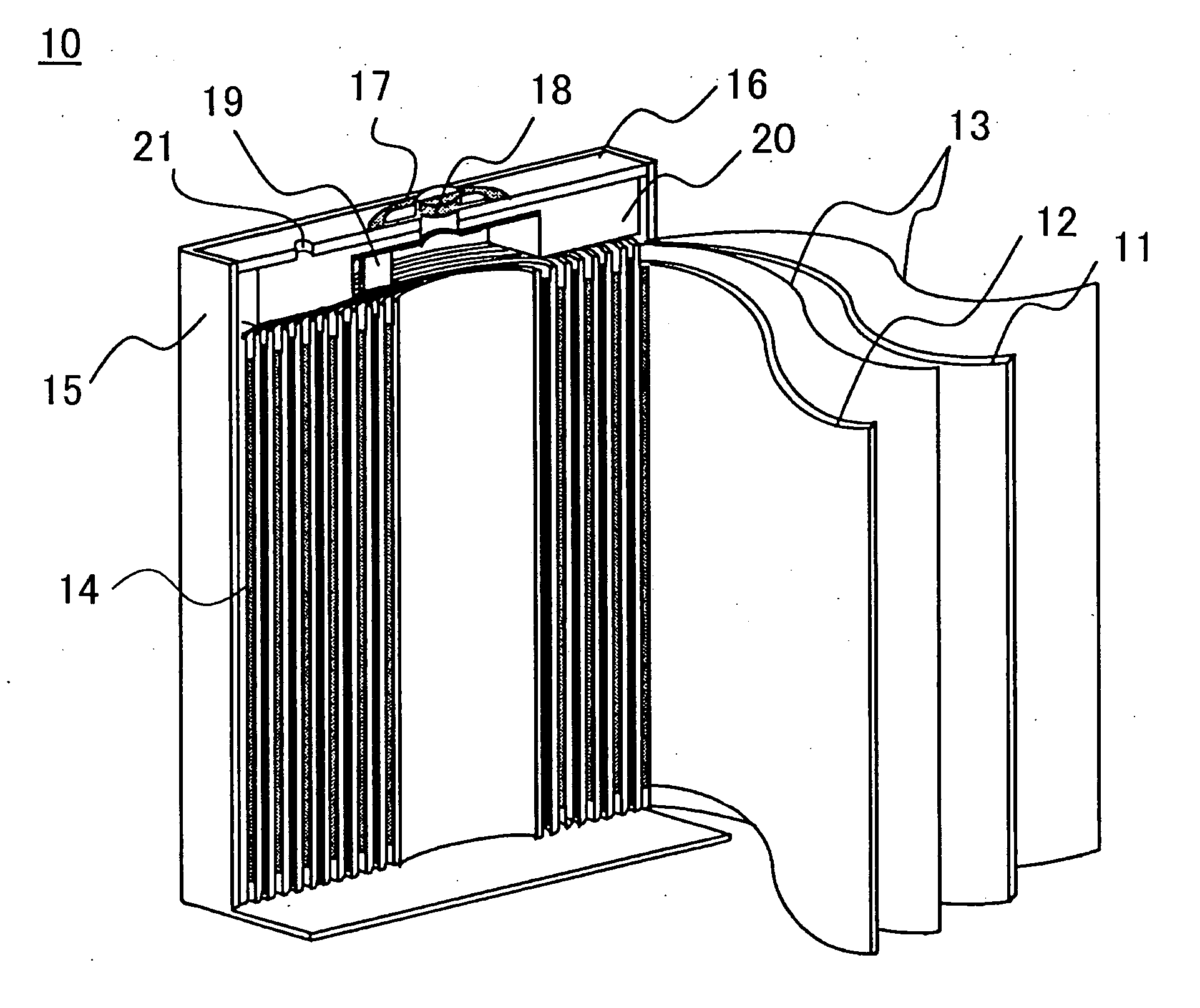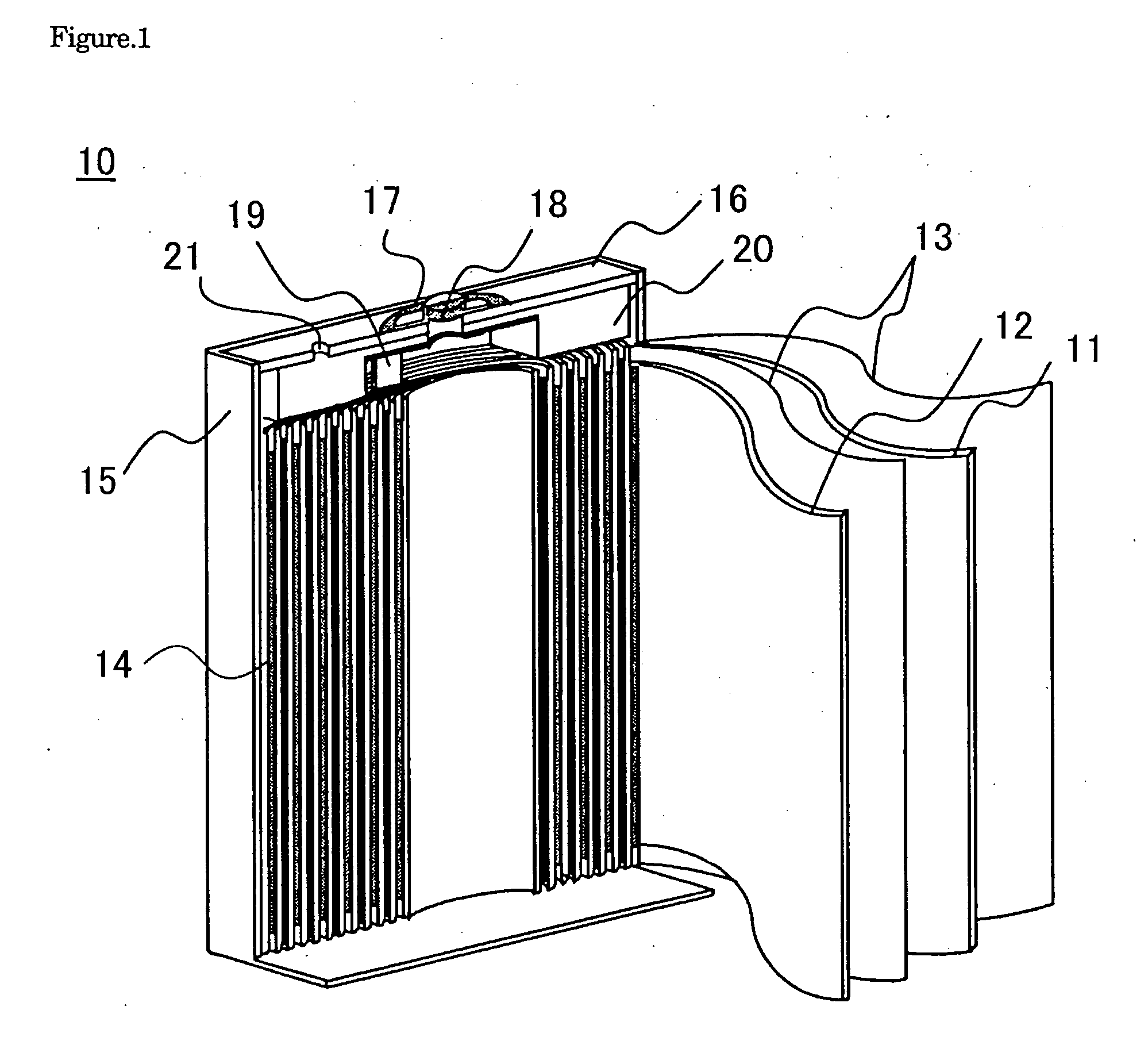Non-aqueous electrolyte secondary battery
a secondary battery and electrolyte technology, applied in the direction of non-aqueous electrolyte cells, cell components, cleaning using liquids, etc., can solve the problems of liquid exhaustion and cycle characteristics, and achieve high charging voltage, improve charge/discharge cycle characteristics, and high charging voltage
- Summary
- Abstract
- Description
- Claims
- Application Information
AI Technical Summary
Benefits of technology
Problems solved by technology
Method used
Image
Examples
Embodiment Construction
[0041] The present invention will be described in detail with reference to preferred embodiments for practicing the invention by using examples and comparative examples. However, the examples explained below merely pertain to a non-aqueous electrolyte secondary battery embodying the technical idea of the present invention, and are not intended to restrict the application of the invention as the invention may equally apply to various other modifications without departing from the technical idea shown in the scope of the claims for a patent of the invention.
[0042] First, the specific method of manufacturing a non-aqueous electrolyte secondary battery common to the production of batteries referred to as examples and the comparative example will be described.
Making of the Positive Electrode
[0043] Foreign element-added lithium cobalt oxide is prepared as described below. As starting material, lithium carbonate (Li2CO3) is used as lithium source, and zirconium and magnesium-added tric...
PUM
| Property | Measurement | Unit |
|---|---|---|
| voltage | aaaaa | aaaaa |
| charging voltage | aaaaa | aaaaa |
| charging voltage | aaaaa | aaaaa |
Abstract
Description
Claims
Application Information
 Login to View More
Login to View More - R&D
- Intellectual Property
- Life Sciences
- Materials
- Tech Scout
- Unparalleled Data Quality
- Higher Quality Content
- 60% Fewer Hallucinations
Browse by: Latest US Patents, China's latest patents, Technical Efficacy Thesaurus, Application Domain, Technology Topic, Popular Technical Reports.
© 2025 PatSnap. All rights reserved.Legal|Privacy policy|Modern Slavery Act Transparency Statement|Sitemap|About US| Contact US: help@patsnap.com



